Wireless Networking
Background
In recent years, along with the popularization of high-performance mobile terminals, Internet connection from wireless networks such as LTE and Wi-Fi has spread rapidly. According to the Information and Communication White Paper of the Ministry of Internal Affairs and Communications, mobile traffic has increased about twice a year at a pace, and the trend is further intensified. In addition, around 2020 it is reported that 7 trillion units of wireless devices will support the lives of 7 billion people, that is, the expectation that 1000 super mobile terminal era per person will come.
RESEARCH AND DEVELOPMENT OF WIRELESS NETWORK TECHNOLOGIES Utilizing Radio Waves is an important subject to increase such explosive mobile traffic.
Wireless network technology is composed of physical layer technology that achieves high capacity utilizing the physical properties of electromagnetic waves, application layer (application layer) that provides convenience for people using wireless terminals, physical layer and applications An intermediate layer (media access sublayer, network layer, transport layer, etc.) connecting the layers.
In this laboratory, we are researching and developing the middle layer technology which effectively conveys the potential of the physical layer to the application layer. In particular, we are studying the second layer (L2), the third layer (L3) and the fourth layer (L4) making full use of the new physical layer technology (L1) shown in Fig.
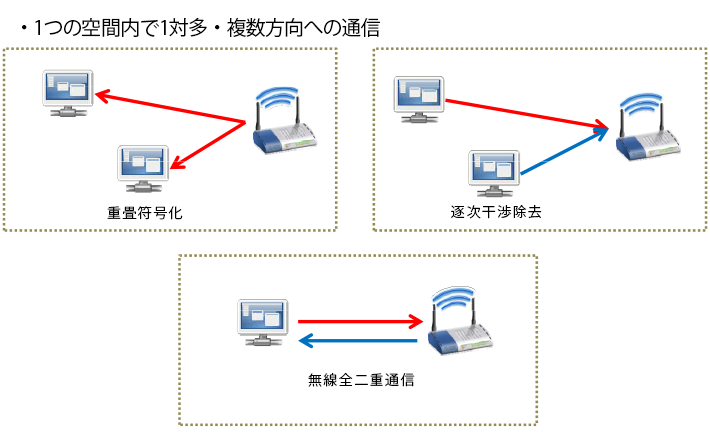
research content
We are mainly studying the following two.
-
1) Media access control that effectively utilizes wireless full-duplex communication
Media access control is a control for determining which terminal transmits radio waves at which timing when a plurality of terminals (for example, mobile phones) share a single resource (for example, radio frequency band). When a plurality of terminals simultaneously transmit signals, it becomes impossible for the receiving side to determine which terminal is transmitting what. This is called a collision in the world of wireless networks. As collisions occur, efficiency becomes worse such as it needs to be sent again, so it is the media access control to avoid traffic. (In analogy to human life, if there are more than one person in the conference room and you talk at the same time, you do not know who is telling who.) One way to avoid this is to provide a moderator.
On the other hand, in general, a radio device can not receive when transmitting radio waves basically, but can not transmit when it is receiving radio waves. In other words, it can not transmit and receive at the same time. The reason for this is that radio attenuation of radio wave propagation is stronger than radio waves (it can only receive about 1 / 10th power of transmitted radio waves), its own signal is too big to receive the signal of the other party . A method of transmitting and receiving signals alternately transmitting and receiving is called half duplex. On the other hand, recently, with the progress of digital signal processing and the like, a method capable of canceling its own transmission signal and simultaneously performing transmission and reception has been developed as a physical layer technology. This is called full-duplex communication (Fig. 2). (To briefly speak to people, you can talk different things while listening.)
Even if the physical layer can realize full duplex communication, efficiency will not rise unless traffic control is successfully done. In this research, full duplex media access control that combines transmission and reception well, full-duplex media access control that can handle even when all terminals can only perform half duplex communication as well as when all terminals can perform full duplex communication (Fig. 3).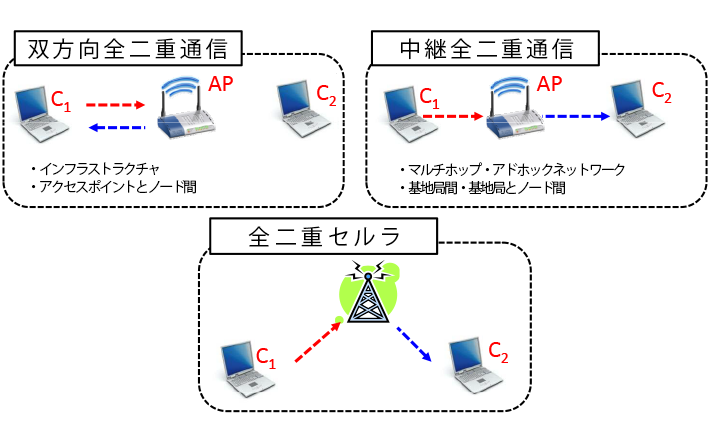
Fig. 2 Wireless full-duplex communication 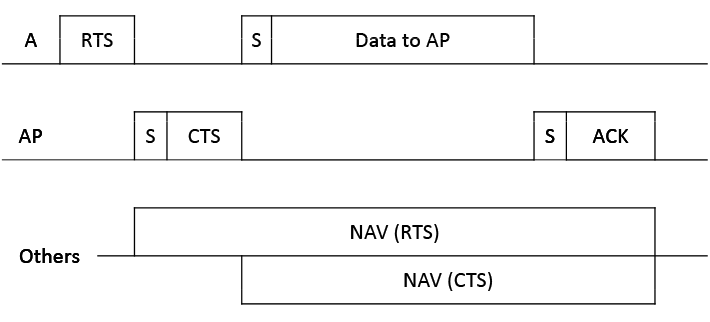
Fig. 3 Wireless full-duplex communication media access control -
2) Media access control that effectively utilizes successive interference cancellation and superposition coding
Normally, a plurality of simultaneously received signals are in conflict and can not receive both. On the other hand, one technique for extracting each of the collided signals is the successive interference cancellation mentioned here. By using this, signals from multiple terminals can be received at the same time. (As an example, could Prince Shotoku hear the ten words at the same time?) As shown in FIG. 4, when receiving a plurality of signals, the receiving side separates by using signal processing when receiving. First, signals from nearby terminals are retrieved by normal decoding. Subtract this from the received signal and extract the far signal.
In addition, superposition coding is a technique of simultaneously transmitting a plurality of signals. As shown in FIG. 5, separate information is simultaneously transmitted to the distant terminal and neighbor terminals. In neighboring terminals, successive interference cancellation is used.
These physical layer technologies can not meet the demands of the application layer by themselves. Even if many terminals try to use these technologies, traffic control is necessary.
In this research, we need a difference in the amplitude of the signal that the superposition coding and the successive interference cancellation reach simultaneously, so that by using the repeater, it is possible to realize a system that allows the access point to communicate faster than directly to the destination terminal Research and development.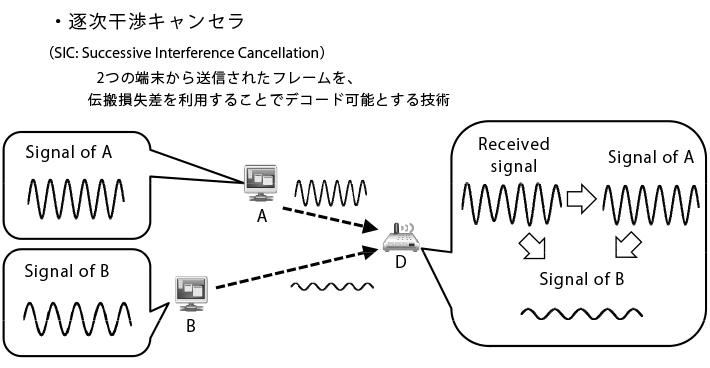
Fig. 4 Successive interference canceller 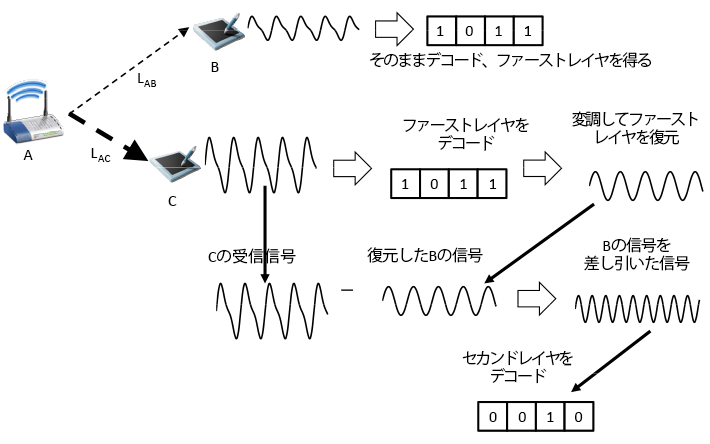
Fig. 5 Superposition coding -
3) Implementation on actual equipment
In addition to theoretical research, we also conduct experiments using real machines. Experiments are proceeding with specific test laboratory license etc.

